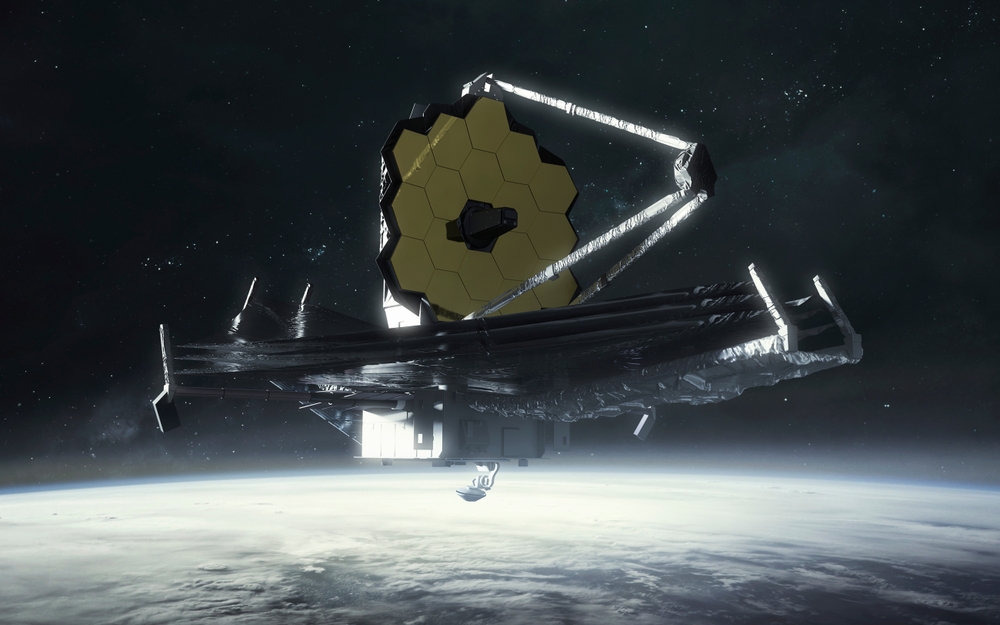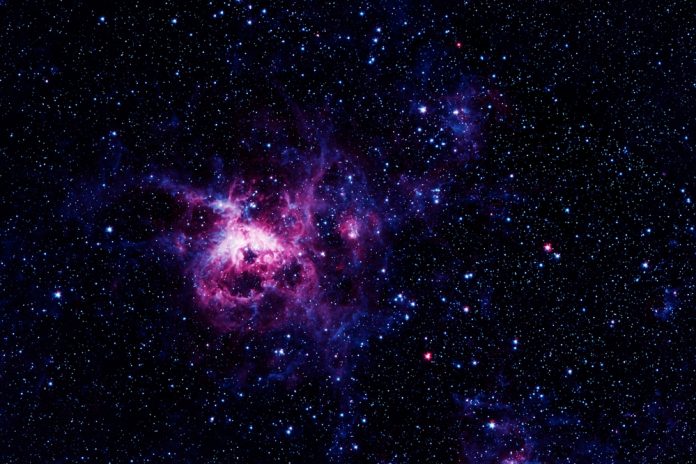A new study by MIT physicists proposes that early dark energy, a mysterious force present during the Universe’s infancy, could solve two of the most pressing problems in cosmology.
The research suggests that dark energy could hold the answer to the enigmatic ‘Hubble tension’ and the unexpected abundance of bright galaxies in the early Universe.
This groundbreaking theory, which suggests that early dark energy played a crucial role in the Universe’s initial expansion, could help fill in major gaps in our understanding of how the cosmos evolved.
Hubble tension: A cosmic puzzle
One of the major challenges in cosmology today is the Hubble tension, a discrepancy between different measurements of how fast the Universe is expanding.
Physicists have long puzzled over this mismatch, as it raises questions about the accuracy of our current models of cosmic evolution.
Early dark energy could offer a solution. Similar to the dark energy driving the current expansion of the Universe, early dark energy is theorised to have briefly accelerated the Universe’s expansion soon after the Big Bang.
This acceleration, according to researchers, could resolve the Hubble tension by explaining the differences in measurements of the Universe’s expansion rate.
Physicists from MIT have taken this theory further, proposing that early dark energy could also explain the puzzling discovery of numerous bright galaxies in the early Universe—an unexpected finding revealed by NASA’s James Webb Space Telescope (JWST).
By incorporating early dark energy into their models of galaxy formation, the team found that this mysterious force could account for both the Hubble tension and the surprisingly large number of bright, early galaxies.
The discovery of bright galaxies in the early Universe
Launched in 2021, the JWST has provided astronomers with the ability to look farther back in time than ever before.
In 2023, the telescope made a startling discovery: it detected a surprisingly high number of bright galaxies, similar in size to the Milky Way, that existed just 500 million years after the Big Bang.

This period represents only about 3% of the Universe’s current age, and previous models suggested that such large galaxies should not have formed so quickly.
According to standard cosmological models, it should take billions of years for gas and dust to accumulate and form galaxies as massive as those observed by JWST.
The presence of these bright galaxies in the early Universe indicates that either our understanding of physics is incomplete or there is a missing ingredient—potentially early dark energy.
Early dark energy: The hidden ingredient?
Early dark energy is theorised to be a force that briefly counteracted gravity’s pull in the Universe’s early stages, accelerating its expansion.
This short-lived influence could explain both the Hubble tension and the rapid formation of the first galaxies.
The researchers developed a model to simulate the formation of galaxies during the Universe’s first few hundred million years.
When they factored in early dark energy, they found that it could account for the number of bright galaxies observed by JWST.
The addition of this hypothetical force led to a prediction of more galaxies forming in the early Universe, better matching the telescope’s findings.
Exploring dark matter halos and the Universe’s skeleton
The team’s research also delved into the role of dark matter halos—regions in space where gravity is stronger, allowing matter to accumulate.
These halos are believed to form the ‘skeleton’ of the Universe, providing the scaffolding within which galaxies emerge.
The researchers developed an empirical model to predict the number, brightness, and size of galaxies in the early Universe based on certain ‘cosmological parameters.’
These parameters are key mathematical terms that describe how the Universe evolves, including the Hubble constant, which defines the rate of expansion, and other factors that track density fluctuations in the early Universe.
The researchers hypothesised that if early dark energy influenced the Universe’s initial expansion, it could also impact other cosmological parameters, potentially leading to the formation of more bright galaxies.
To test this, they incorporated a model of early dark energy—one that resolves the Hubble tension—into their framework, observing how early dark matter structures evolved to form galaxies.
Study co-author Rohan Naidu explained: “What we show is, the skeletal structure of the early Universe is altered in a subtle way where the amplitude of fluctuations goes up, and you get bigger halos, and brighter galaxies that are in place at earlier times, more so than in our more vanilla models. It means things were more abundant, and more clustered in the early Universe.”
A solution to cosmic mysteries
The team’s findings offer a tantalising possibility: early dark energy could be the missing piece that explains both the Hubble tension and the abundance of bright early galaxies.
As more data from the JWST becomes available and physicists refine their models, early dark energy could prove to be a crucial factor in understanding the Universe’s formation and evolution, unlocking new insights into the cosmos’ earliest moments.









